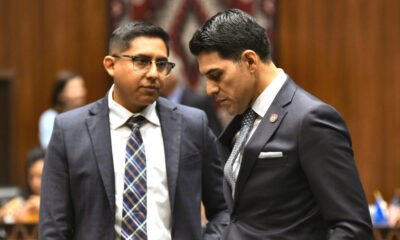environment
Erosion Threatens Watershed as SunZia Powerline Construction Takes Its Toll

The construction of the SunZia transmission line project has sparked significant backlash from environmental groups in Southern Arizona. A recent letter highlights “extensive erosion” and environmental damage, stemming from the failure of Pattern Energy to implement necessary erosion control measures.
Published on Tuesday, the letter expresses concerns from several organizations, including Archaeology Southwest. The SunZia Southwest Transmission Project aims to transport about 3,500 megawatts of electricity over approximately 520 miles of diverse landscapes, connecting New Mexico’s SunZia Wind project with areas in Central Arizona.
Pattern Energy touts this initiative as a vital step toward creating the largest clean energy infrastructure in U.S. history, with expected completion by 2026. However, the project has faced persistent criticism regarding its proposed route through Arizona, raising alarms among various stakeholders, including the San Carlos Apache Tribe and the Tohono O’odham Nation, who fear disruptions to ancient burial sites and overall landscape integrity.
The environmental implications are also alarming. Groups argue that the ongoing construction will adversely affect the San Pedro River and broader ecosystems due to the installation of numerous new roads and tower pads. Their letter was directed to officials at Pattern Energy, the Bureau of Land Management, and several county supervisors, stressing the urgency of the matter.
Representatives from the Center for Biological Diversity, Tucson Audubon Society, and others noted that the construction teams have not adequately managed erosion or sedimentation. They reported that, with substantial construction now complete, essential erosion control measures remain unaddressed. “Installation of water bars, cross ditches, and biodegradable silt fences is overdue,” they emphasized.
This ambitious project is part of a larger initiative by the Biden administration to expedite clean energy developments under the Inflation Reduction Act. SunZia—and other projects in Arizona—are partially covered under the FAST-41 program, which aims to streamline permitting processes.
Legal battles have also emerged. The San Carlos Apache Tribe and the Tohono O’odham Nation, supported by environmental advocates, previously sought to halt construction through a lawsuit. Nevertheless, their motion was denied by U.S. District Judge Jennifer G. Zipps, permitting further progress by Pattern Energy while the case is taken to the 9th Circuit Court of Appeals, which has yet to make a ruling.
In their correspondence, the groups articulated concerns over unaddressed erosion threats, detailing the formation of rills, ruts, and gullies detrimental to local soil and hydrology. They urged that immediate actions be taken to rectify these issues, including proper installation of erosion control structures.
While some measures have been taken, such as building detention basins, complaints emphasize that these efforts fall far short of what’s necessary to manage the erosion effectively. The ongoing degradation not only jeopardizes ecosystems but also exacerbates habitat fragmentation, encouraging the spread of invasive species, ultimately harming the already vulnerable wildlife in the area.


















